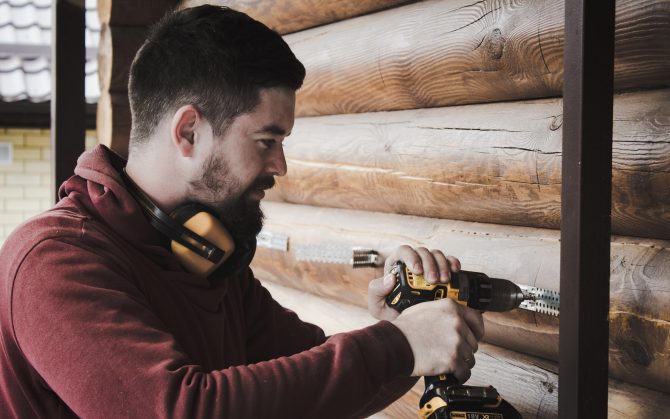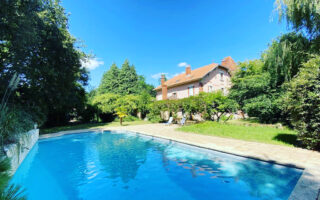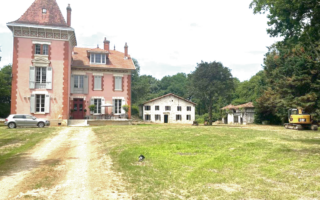Renovating a French Property: Differences from the UK
Advice

You’ll need to forget some of the methods and materials that are familiar to you and approach much of the job in a different way. In France DIY is a relatively new phenomenon, although it is expanding fast. For those of us used to the extensive do-it-yourself culture, the relative slimmer choices of materials in France can be frustrating. Expect to drive some distance to find the big stores that stock a large range of products. You will soon become familiar with Bricomarche, M. Bricolage, Weldom or Point P.
Here’s a list of what to expect:
Builders and artisans: There’s not only the language barrier to get over but the methods of construction and DIY as well. Local builders will have a good knowledge of the local materials and methods. You may also find registered English-speaking builders depending on your area. One of the first differences you will notice is that nothing is done with great speed. Builders rely on suppliers and often have to order materials that can take weeks to arrive depending on the time of year. Delays can also be caused by holiday periods (such as the month of August), weather and strikes. Most builders work a 39-hour week, especially if they have salaried employees and will be off on Sundays and nationdal holidays. Expect to pay a deposit before work begins, and in the case of a large renovation you may be asked for stage payments. Dates can be afffected due to sickness, delays on other jobs, material suppliers or changes to the original work required. Have patience, make allowances for these unforeseen circumstances in your planning and keep everything in writing. Read our other articles about how to hire an artisan and the legal implications to keep in mind.
Roofing: Many French roofs do not have a felt underlay to prevent water penetration should a tile slip. If you’re putting on a new roof, there are now several types of membrane on the market that can you can use to give you better protection. It is always wise to check the condition of your roof on a regular basis as old terre cuit tiles become porous and will leak. Tiles that are laid loosely on the roof also move more easily in a strong wind especially if the valley tile (the under tile) is just a roman tile laid on its back.
Rendering: Virtually all rendering on the outside of French buildings is done with a lime base mixed with sand. Cement render is used but does not have the pliability of lime render which gives with the fluctuating weather temperatures. In some areas the colour of your render is controlled, so be sure to check before you apply something that may have to be taken off again.
Electrical wiring: France has two phases: Monophase – general domestic use and Triphase – Agricultural and Industrial use. If you find that when you put the kettle on all the electrics trip there may be a fault in your system or your house may be underpowered. You are allowed to re-wire your own property under the auspices of your electricity supplier. They will charge you for regular inspections and the final certificate. However to be safe, it is always best to employ a registered and insured electrician.
Heating: Yes, it does get cold in France in winter. Installing a complete system can be expensive – well in excess of 10,000€ for a five-room house. The good news is that the increase of competition and tax rebates can offer some relief. Choice of fuel will depend on the intended use, either wood, electric, fuel, solar, pellet, town gas, LPG or paraffin. Compare the options taking into account the cost of installation as well as the running costs, and whether the system will suit your lifestyle.
Plastering: In France you will find that a fibrous mesh liner that creates a textured surface instead of lining paper. A French plasterer won’t expect a perfectly smooth finish. This is because in France plastered walls are almost always wallpapered, so if you want a smooth finish to paint on, make you clearly specify this.
Paint: This seems to be an issue amongst expats in France with many people dissatisfied with the quality and price. The thing to remember, though, is that French products have been made to deal with conditions that are very different to those in the UK. In summer your decorative finishes have to cope with longer hours of hotter sunshine and many of the external paints and varnishes are designed to cope with intense UV rays.
If a room suffers from humidity there is every chance that any emulsion you put on the walls will bleach off. We have found that with emulsions that are not going to be used in a humid area such as a bathroom or kitchen, it is often best to find a good base paint, white or cream in tint and then add your own colour (the larger DIY shops do mix paint). This way you can purchase a slightly more expensive paint of better quality and get the colour you like. As many of the plaster finishes in French homes are based on lime (chaux) you just first apply an under-coat (sous-couche) to prevent your paint being literally sucked up by the wall. In France you rarely use primer (la peinture d’impression), choosing diluted undercoat instead. Don’t be afraid to try something out – buy testers if possible because until you’ve applied a product to a wall, door or ceiling you don’t know exactly how it will react and the finish you will get.
Flooring: Tiled, laminated or real wood flooring are popular so good quality products are easy to find. If you have an old oak floor that you want to keep and restore, treat it with a insecticide and fungicide asinsect infestation is a real problem. For a new wooden floor, think about where it is going. Humidity will rot a wooden floor in a short span of time – just take a look at any floor that is laid over a damp cellar.For good quality carpet you may need to hunt around. Some DIY stores stock inexpensive carpeting but for good quality carpet moquettes and tapis you need to find a specialist.
Accessories: This is the fun part. France is awash with warehouse-sized stores as well as smaller shops to turn your interior into a chateau, a rustic farm or go completely retro. Also worth searching the depot ventes, antiques and brocantes, vide greniers (the French equivalent of the car boot sale) and local markets and Emmaus – France’s largest charity entreprise people donate items and Emmaus sells them to raise funds for the needy, so you’ll be contributing to a good cause and finding a bargain as well.
•Stephen Davies, Renovation Topic Host
Share to: Facebook Twitter LinkedIn Email
More in chateau, heating, legal, markets, renovation, summer, tax
Leave a reply
Your email address will not be published. Required fields are marked *



